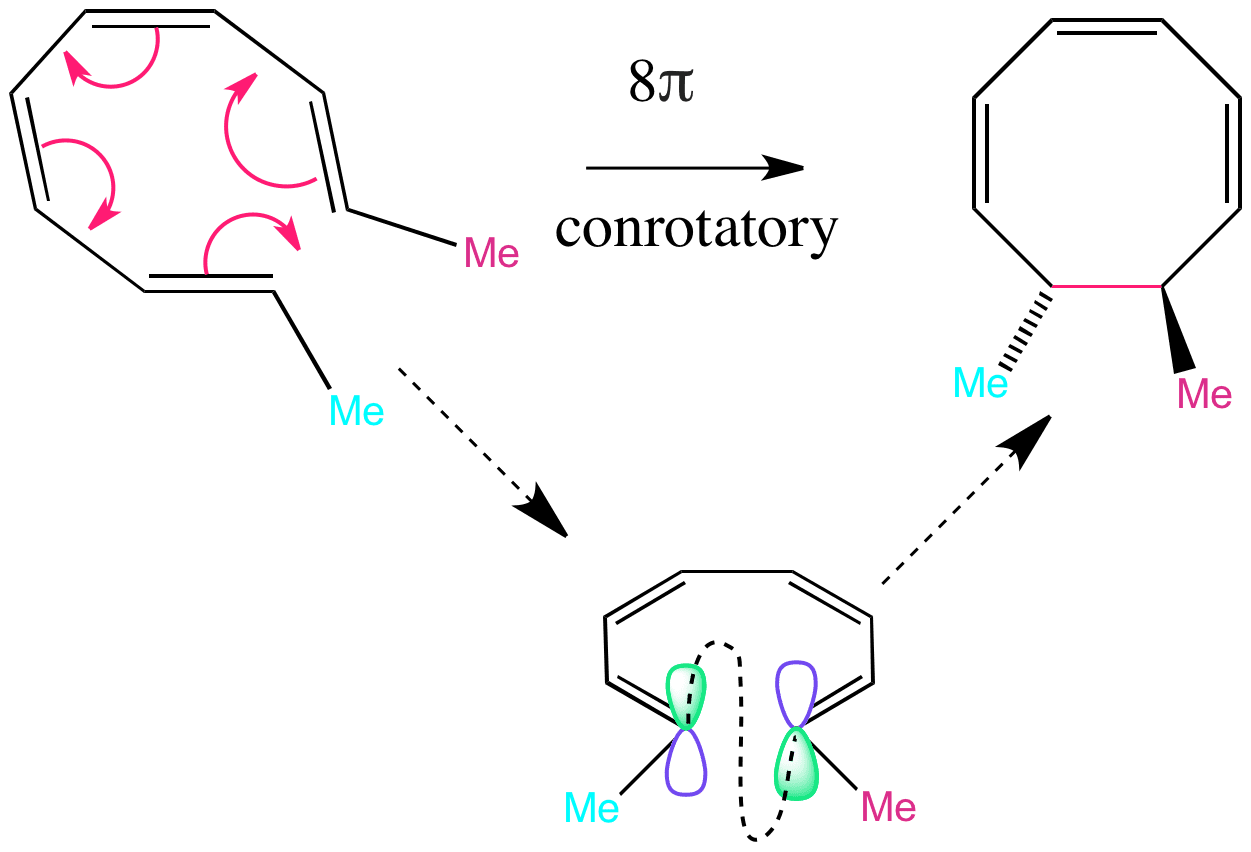
Click the structures and reaction arrows in sequence to view the 3D models and animations respectively
This is an example of a sequence of electrocyclic reactions which occur in nature. It illustrates the differences between conrotatory and disrotatory steps within the same molecule, depending on the different numbers of pi electrons.
The first step is an 8pi system which undergoes an electrocyclic reaction in a conrotatory direction. The 8pi system closes the 8-membered ring and the substituents end up on different sides. This is because the bond forming is a result of the orbitals being on opposite sides, this is an antarafacial process.
Please note that here the substituents that end up on opposite sides are modelled by methyl groups. The berry coloured methyl is the allyl chain with a phenyl at the end, and the cyan coloured methyl is the carboxylic acid substituent.
Clicking on the word “conrotatory” shows the movement of the orbitals as part of the animation of the reaction. This animation is slow to load.
Final Year Project 2013: Ilona Blee
Next Step in Tandem – disrotatory to form Endiandric Acid D
Next Step in Tandem – disrotatory to form Endiandric Acid E

Above is the retrosynthetic route used to identify endiandric acid D and its proposed precursor.
K. C. Nicolaou, N. A. Petasis, R. E. Zipkin and J. Uenishi, J. Am. Chem. Soc., 1982, 104, 5555–5557.